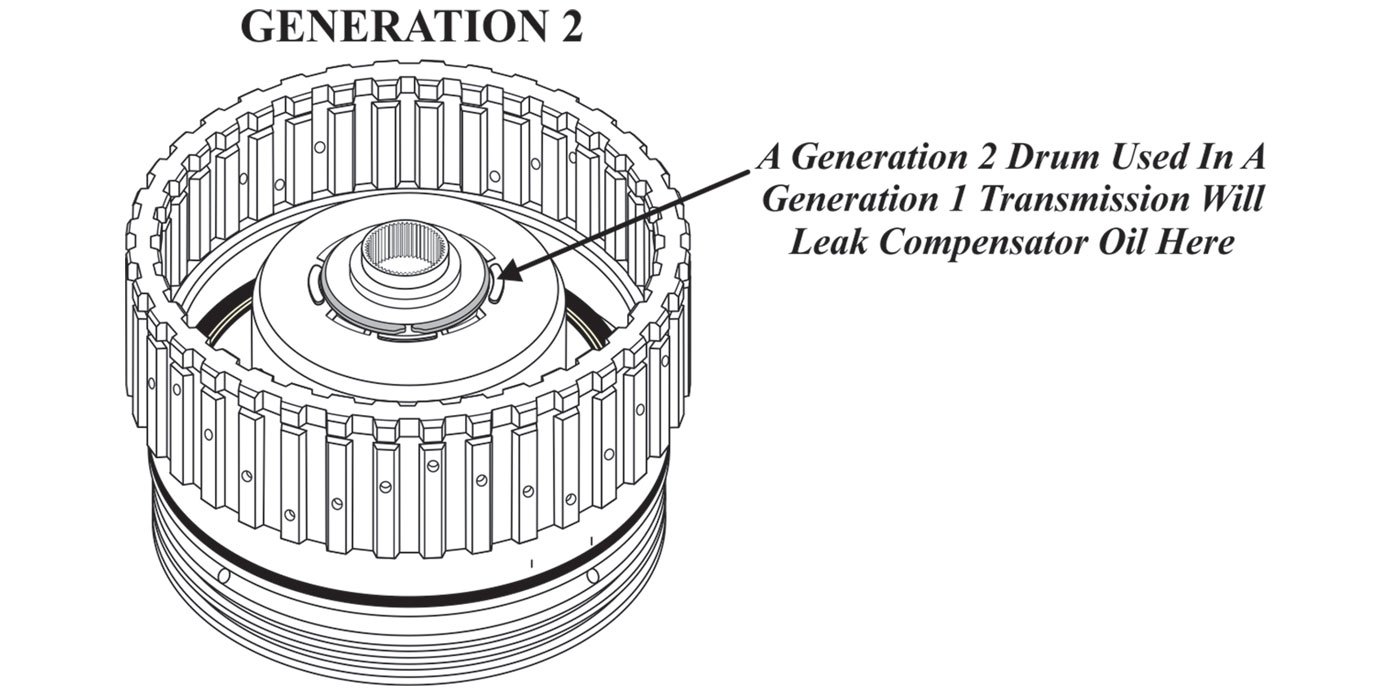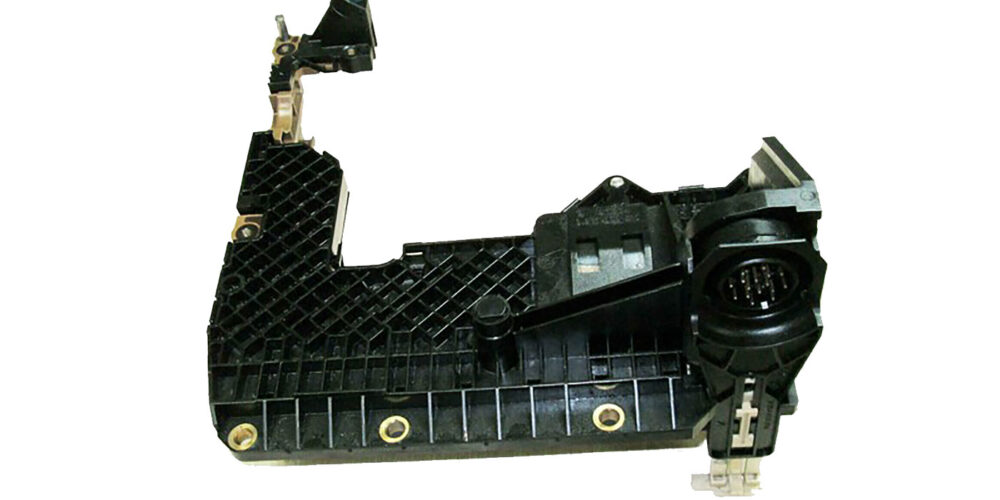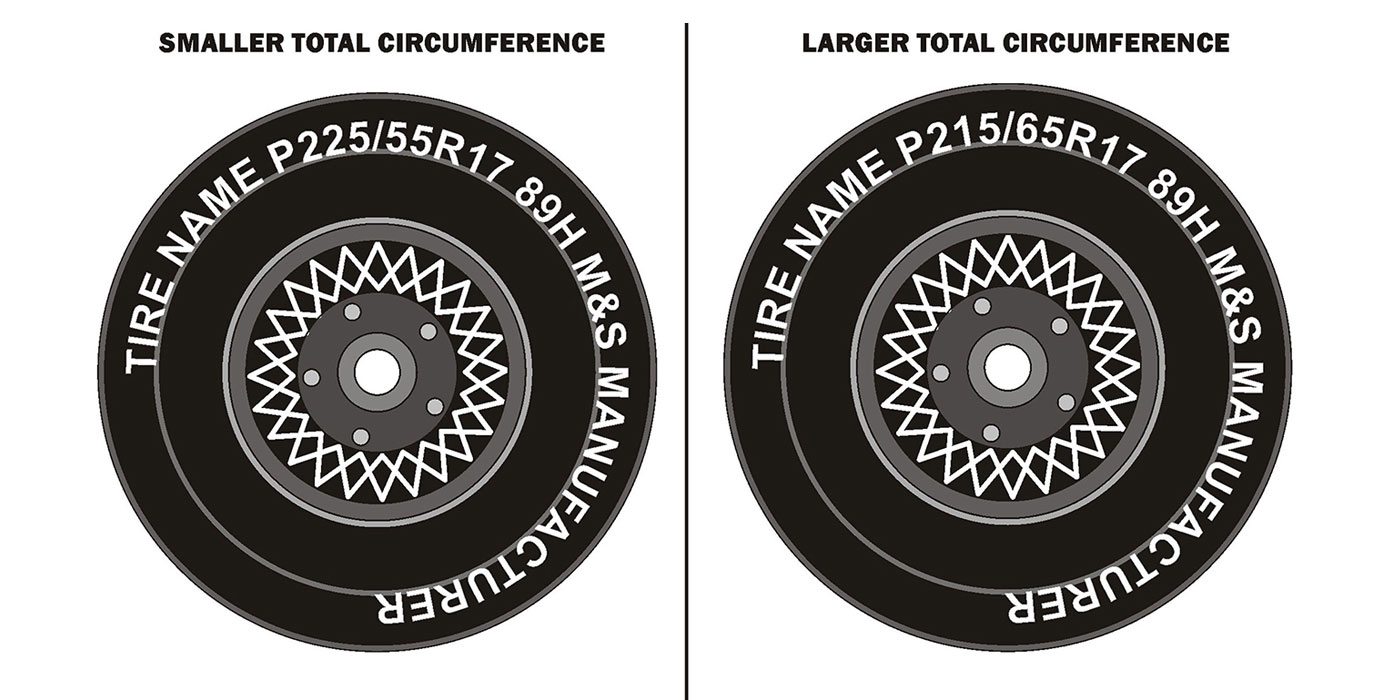



Before or after overhaul, a vehicle equipped with the RE4FO4A/V automatic transaxle exhibits a harsh-shift condition. The complaint generally is described as a harsh 1-2 shift, with other shifts feeling acceptable. This problem may set code P0745.

Potential causes could be the EPC solenoid, shorted or open wire harness, corroded connectors, a faulty dropping resistor or a bad computer.

Use the following procedures to troubleshoot and fix a problem in the line-pressure-control solenoid circuit.
Step 1
Check the resistance of the pressure-control solenoid. Resistance should be about 3-5 ohms. Refer to Figure 1 for connector configuration and resistance check. If the resistance is between 3 and 5 ohms, go to Step 2.
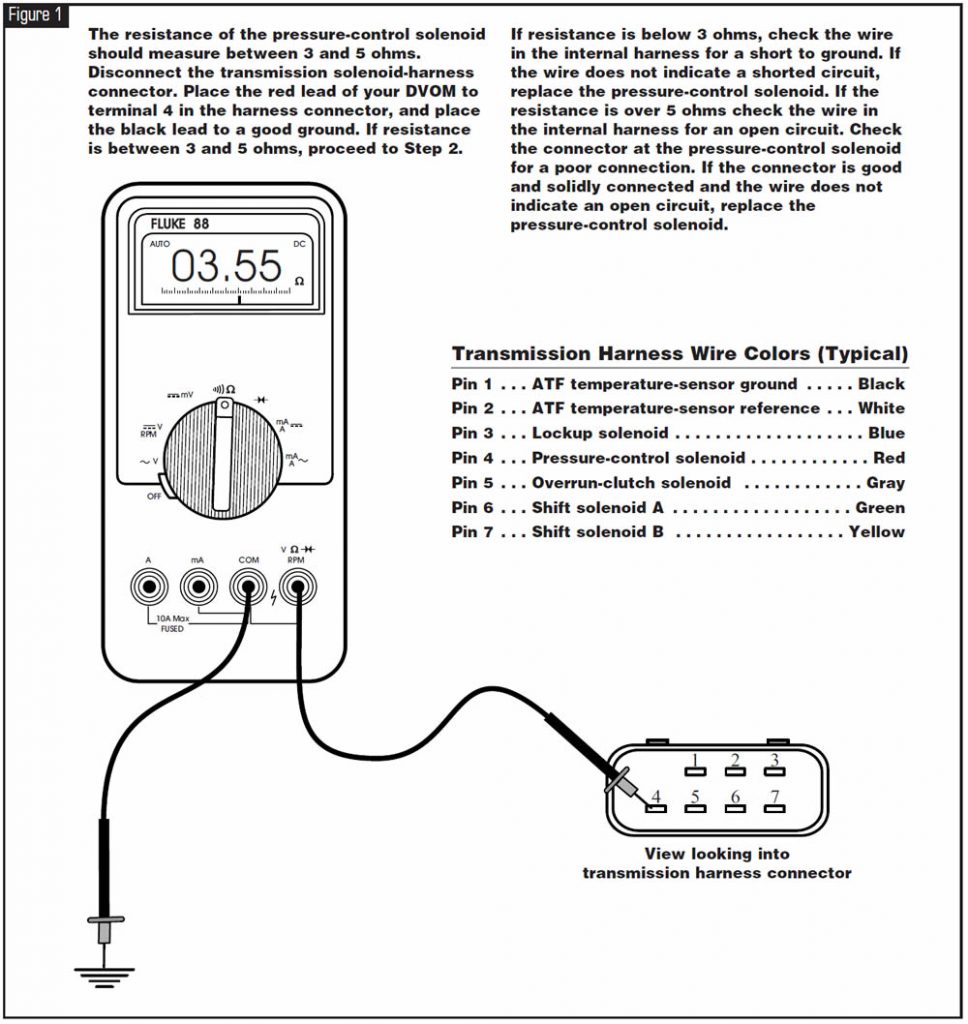
Step 2
Locate and check the resistance of the dropping resistor. Refer to Figure 2 for the dropping-resistor resistance check. The dropping resistor should measure between 11.2 and 12.7 ohms. If resistance is not between 11.2 and 12.7 ohms, replace the resistor. If resistance is between 11.2 and 12.7 ohms, proceed to Step 3.
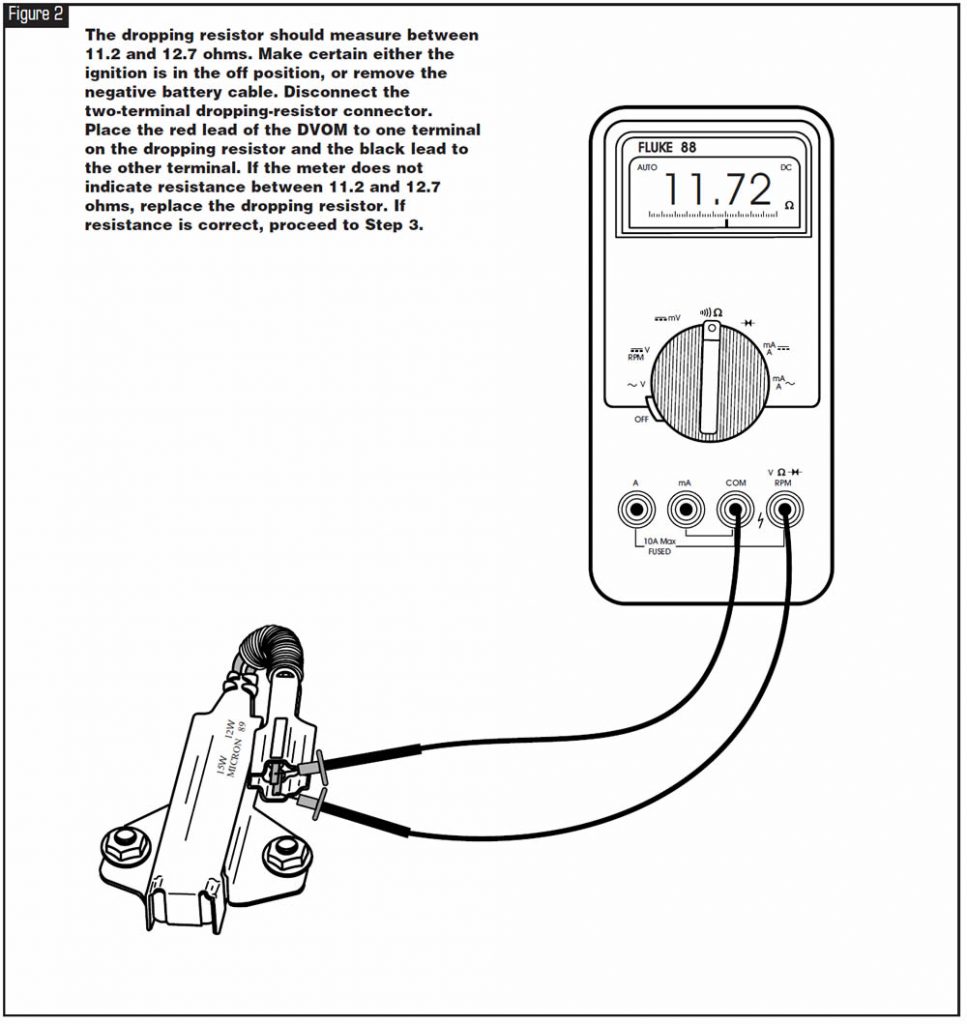
Refer to Figure 3 for locations of the TCM and dropping resistor by model/year.
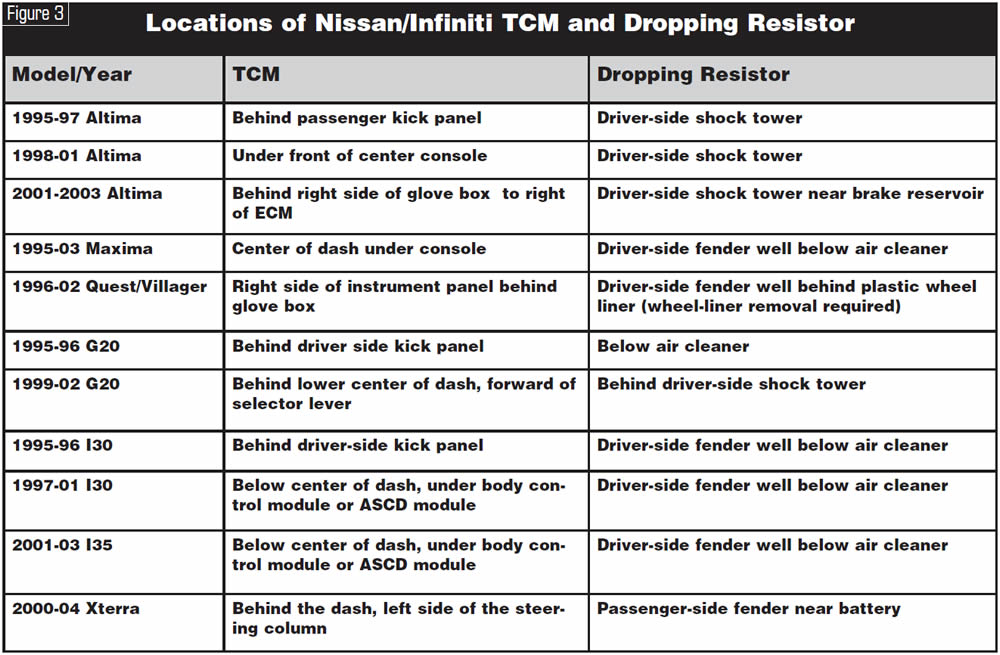
Step 3
Plug the dropping-resistor connector back in and turn the ignition on. Back-probe terminal 1 of the dropping resistor. The voltage should be between 6 and 12 volts with the throttle closed. As the accelerator pedal is depressed the voltage will drop to about 0.45 volt. Next, back-probe terminal 2 at the dropping resistor. The voltage should be between 2.5 and 3.5 volts. As the accelerator pedal is depressed the voltage will drop to about 0.45 volt.
Refer to Figure 4 for connector view and voltage check at the wire from the computer to the dropping resistor.
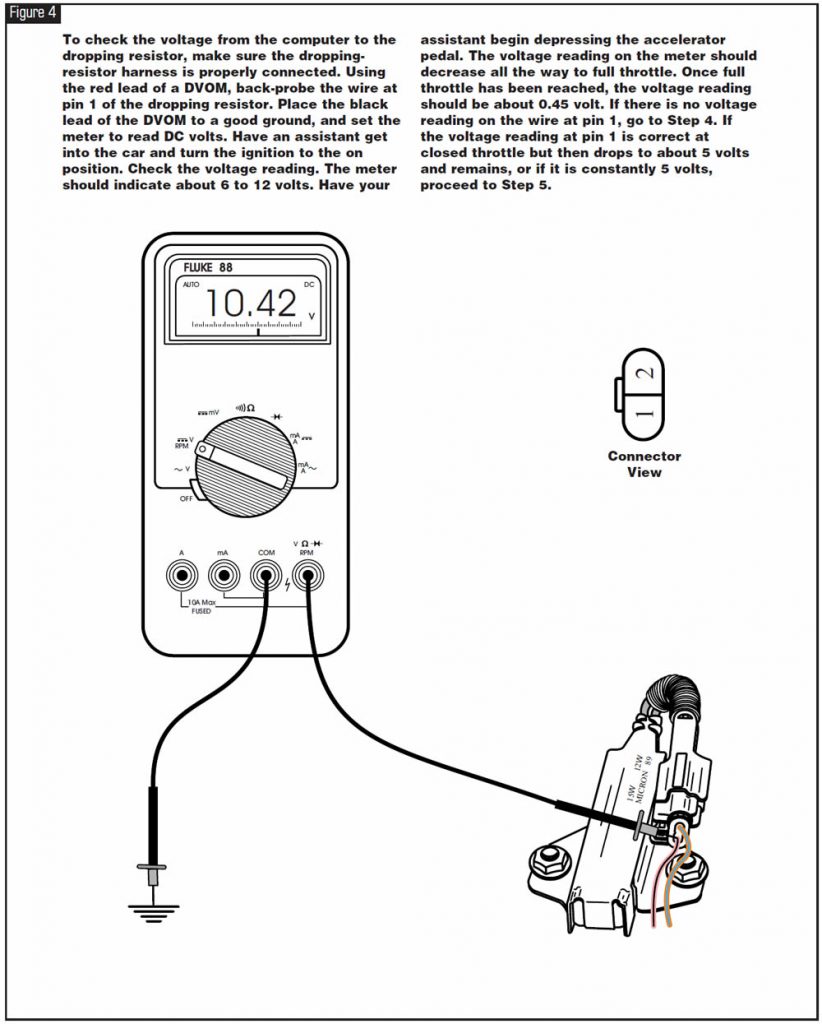
Refer to Figure 5 for connector view and voltage check on the wire that goes to the pressure-control solenoid.
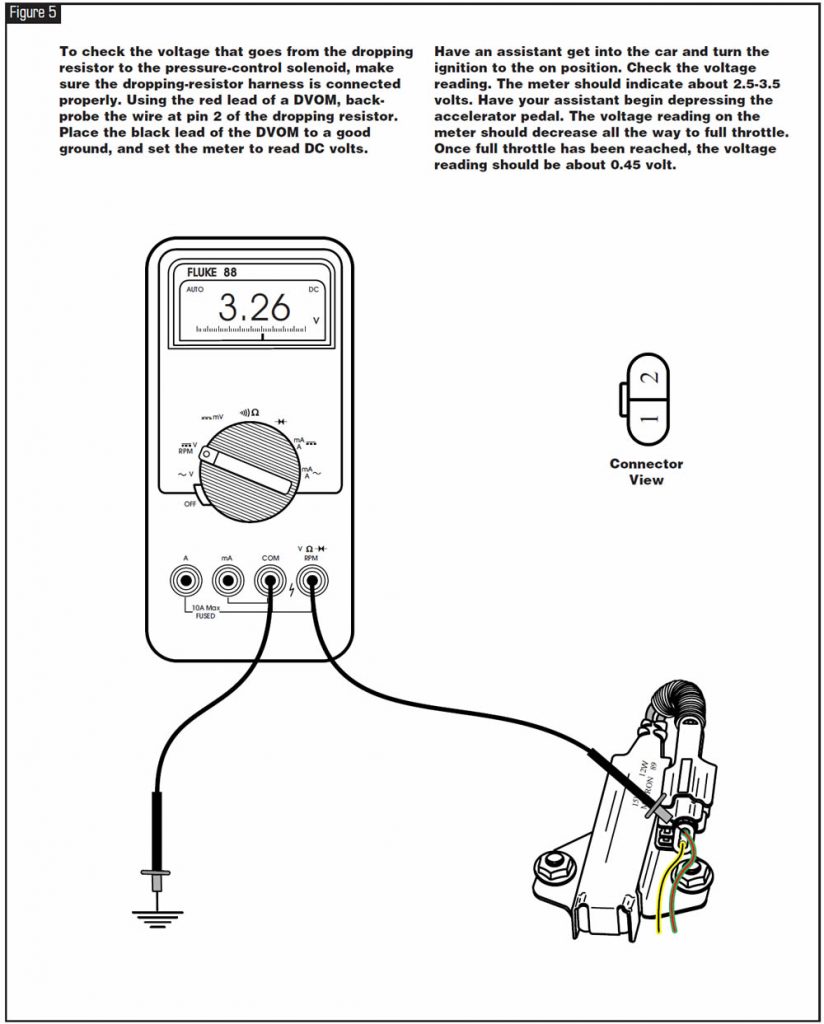
If there is no voltage reading on the wire that comes from the computer to the dropping resistor at pin 1, go to Step 4. If the voltage reading on that wire is correct at closed throttle but then drops to and remains about 5 volts or is constantly 5 volts, proceed to Step 5. If the voltage is over 5 volts and does not decrease with throttle opening, proceed to Step 6.
Step 4
If no voltage is indicated on the meter at pin 1 of the dropping resistor, the wire coming from the computer to the dropping resistor is either shorted to ground or open. Refer to Figure 3 for locations of the TCM and dropping resistor. Refer to Figure 6 for a diagram of the pressure-control-solenoid circuit and wire colors for various years and models.
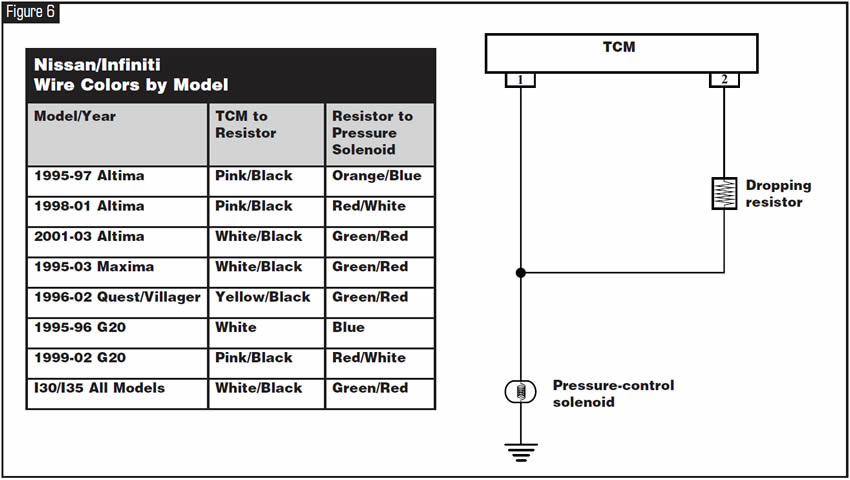
Refer to Figure 7 for TCM connector-pin layout and wire-integrity checks for 1995- to 1998-model vehicles.
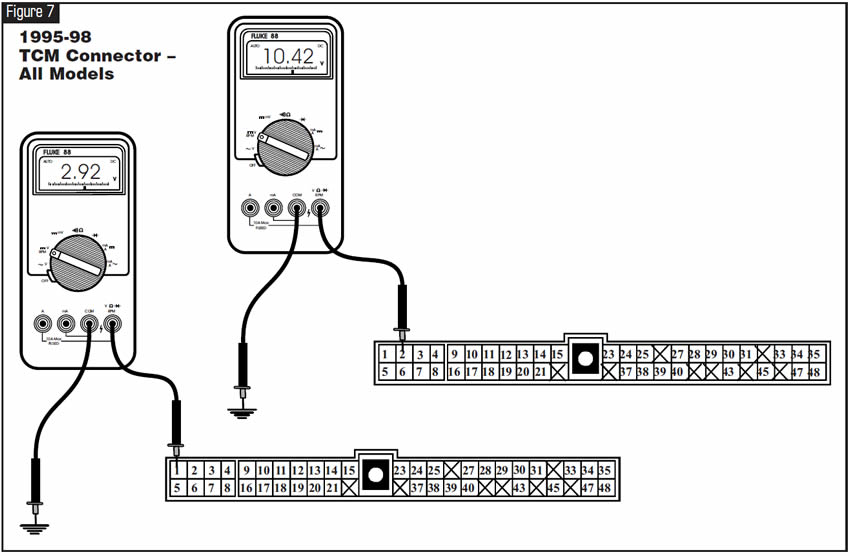
Refer to Figure 8 for TCM connector-pin layout and wire-integrity checks for 1999 through 2003 models.
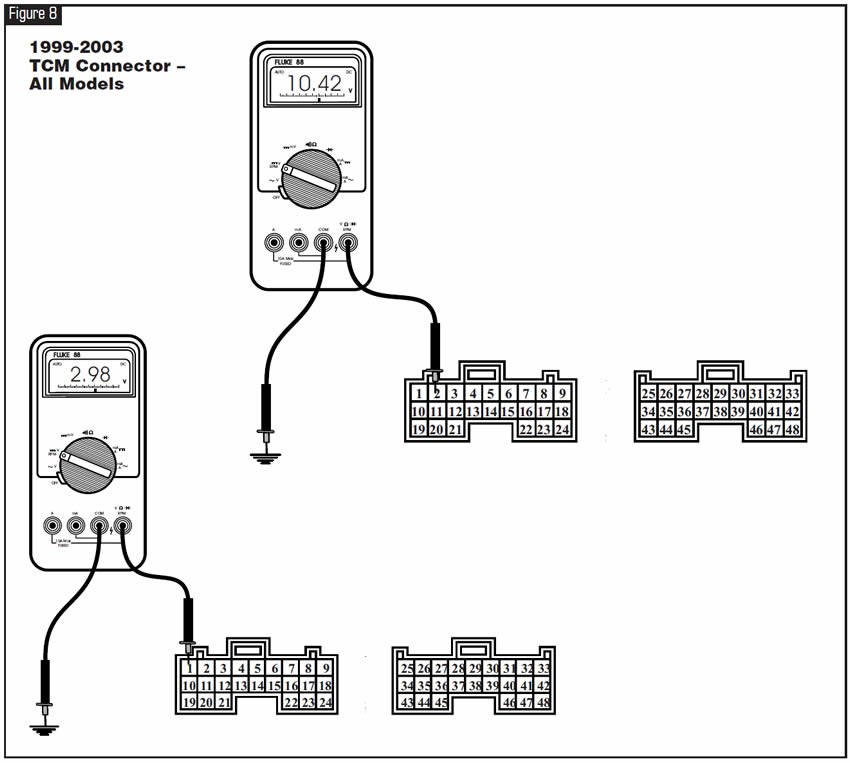
After locating the computer for the vehicle you are working on, turn the ignition on. Using your voltmeter, and probe terminal 2 at the computer connector again. If the meter shows resistance, the wire is shorted to ground. Locate and repair the short, or cut the wire at the TCM and dropping resistor and run a new wire from end to end. If the meter indicates an open circuit, the wire is not shorted. Plug the connector back in at the TCM and dropping resistor. Again turn the ignition on and recheck for voltage. If there is still no voltage present, replace the computer.
Step 5
If the voltage at pin 1 of the dropping resistor is correct at closed throttle, then drops to 5 volts and remains or is constantly at 5 volts, this indicates too much resistance or an open in the circuit. The open is because of either a faulty dropping resistor (even though resistance indicates between 11.2 and 12.7 ohms) or a problem with the wire from the dropping resistor to the pressure-control solenoid. For circuit diagram, refer to Figure 6.
Turn the ignition on. Using the DVOM, back-probe terminal 1 of the transmission-computer harness connector and check to see whether voltage is present. If the meter indicates no voltage, the open in the wire is between the dropping resistor and pressure-control solenoid. If the meter shows voltage, the problem could be with the transmission-case connector, the connector inside the transmission at the pressure-control solenoid, or a faulty dropping resistor.
Step 6
If the voltage is more than 5 volts on both terminals 1 and 2 at the dropping resistor, and the voltage doesn’t decrease with throttle opening, the problem could be that the wire going to the pressure-control solenoid is shorted to power, or the TCM is no good.
To determine whether the wire is shorted to voltage, locate the TCM (refer to Figure 3). Disconnect the controller connector (referring to figures 7 and 8 for the correct model year) and the connector for the dropping resistor. Using a DVOM, connect the red lead to terminal 2 and place the black lead to ground. If voltage is present, there is a short to power from the TCM to the dropping resistor. If no voltage is present, check for voltage at terminal 1. If voltage is present, the wire from the dropping resistor to the pressure-control solenoid is shorted to power. If no voltage is present at both terminals, the problem is a faulty TCM.


September 2005 Issue
Volume 22, No. 9
- RE4FO4A/V: Harsh Shifting, Code P0745: Nissan Altima, Maxima, Quest; Infiniti G20, I30 Series; Mercury Villager


